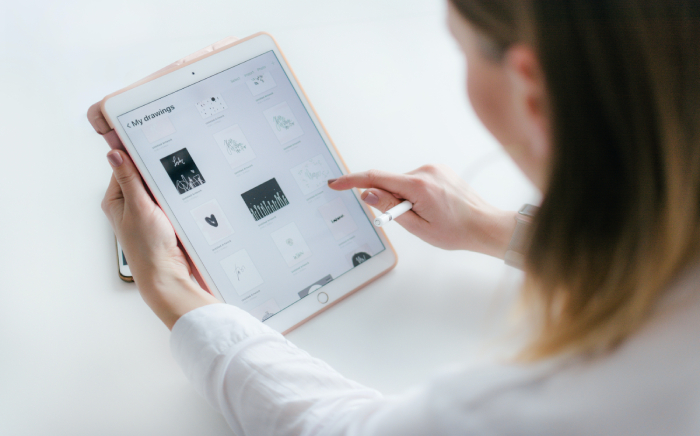Microplastic
A weekly wash you might not know it but in each load, you close released hundreds of thousands of tiny fabric fibers many of which contain plastic. From dirty washing water they soon get into the environment, poisoning our waterways and the food chain. Substantial numbers of commercially important fish and shellfish are now contaminated with small pieces of plastic including fibers. Because those fibers won’t degrade unless we start to take action to reduce those imports we are only going to see more and more in the marine life. Microfibers you can’t see them and so they ‘re
easier for animals to ingest. Under the microscope the problem is clear the samples contain suspected microfibers and will be sent off for further analysis. Both inside a sea bird and a fish’s stomach. 190,000 tons of plastic from our clothes into the oceans every year. That is equivalent of 1,357 blue whales. It is suggested that older fabrics that most microfibers but without changes and support retailers’ experts warned that the problem will only get worse
Plastics or microplastics we all know what that is it’s in packaging, shopping bags, to-go cups, toys, car parts, synthetic clothing, electrical and home appliances, and plastic bottles. Plastic is an artificially made material which is why technically called a synthetic compound. It is made mostly of crude oil, natural gas, or coal. Plastic is not naturally biodegradable unlike for example compost that means plastic does not rot and often ends up as trash on the ground and in the ocean there the plastic parts disintegrate by heat, wind, and waves bit by bit into even smaller parts known as microplastics by definition these tiny synthetic compounds are between 5 millimeters and one micrometer long even smaller particles are technically called nano plastics. These shredded plastic waste particles are known secondary microplastics the wearing down of car tires for example is one of the biggest causes of microplastics. But before this trash is ever produced the products must first be made for that you need primary micro plastics.
In washing clothes microplastics get into the sewer water on land and in our water bodies. The smaller the particles the harder it is to filter them. For example in sewage treatment plants millions of tons of microplastics are distributed everywhere and that’s increasing the surface of microplastics is a magnet for toxins and pathogens animals both in the water and on land confuse the plastic particles with small animals and consume them as food Through the food chain the pollutant rich plastic particles finally reach our plates and make their way into our bodies even in our drinking water and foods such as salt, honey or milk you can find certain microplastics the consequences of consuming plastic are animals are diverse internal injuries and inflammations, hormonal imbalances, illnesses and death. The effects on humans have been researched enough yet the topic of microplastic is often a hot debate. It is about rethinking and finding alternatives to plastic and about recycling so that the amount of plastic and the resulting microplastics in nature no longer increases. Everyone can do their part there are many possibilities one thing is to stop using plastic all together instead of to-go cups you can use mugs or thermos, plastic bags can be replaced by bags brought from home and the proper disposal of plastic waste is important so it can be recycled and micro plastics don’t end up in nature
You might not know, a weekly wash and in each load, you close released hundreds of thousands of tiny fabric fibers many of which contain plastic. From dirty washing water they soon get into the environment, poisoning our waterways and the food chain. Substantial numbers of commercially import fish and shellfish are now contaminated with small pieces of plastic including fibers. Because those fibers won’t degrade unless we start to take action to reduce those imports we are only going to see more and more in the marine life. Microfibers you can’t see them and so they ‘re easier for animals to ingest. Under the microscope the problem is clear the samples contain suspected microfibers and will be sent off for further analysis. Both inside a sea bird and a fish’s stomach. 190,000 tons of plastic from our clothes into the oceans every year. That is equivalent of 1,357 blue whales. It is suggested that older fabrics that most microfibers but without changes and support retailers’ experts warned that the problem will only get worse
Plastics or microplastics we all know what that is it’s in packaging, shopping bags, to-go cups, toys, car parts, synthetic clothing, electrical and home appliances, and plastic bottles. Plastic is an artificially made material which is why technically called a synthetic compound. It is made mostly of crude oil, natural gas, or coal. Plastic is not naturally biodegradable unlike for example compost that means plastic does not rot and often ends up as trash on the ground and in the ocean there the plastic parts disintegrate by heat, wind, and waves bit by bit into even smaller parts known as microplastics by definition these tiny synthetic compounds are between 5 millimeters and one micrometer long even smaller particles are technically called nano plastics. These shredded plastic waste particles are known secondary microplastics the wearing down of car tires for example is one of the biggest causes of microplastics. But before this trash is ever produced the products must first be made for that you need primary micro plastics.
In washing clothes microplastics get into the sewer water on land and in our water bodies. The smaller the particles the harder it is to filter them. For example in sewage treatment plants millions of tons of microplastics are distributed everywhere and that’s increasing the surface of microplastics is a magnet for toxins and pathogens animals both in the water and on land confuse the plastic particles with small animals and consume them as food Through the food chain the pollutant rich plastic particles finally reach our plates and make their way into our bodies even in our drinking water and foods such as salt, honey or milk you can find certain microplastics the consequences of consuming plastic are animals are diverse internal injuries and inflammations, hormonal imbalances, illnesses and death. The effects on humans have been researched enough yet the topic of microplastic is often a hot debate. It is about rethinking and finding alternatives to plastic and about recycling so that the amount of plastic and the resulting microplastics in nature no longer increases. Everyone can do their part there are many possibilities one thing is to stop using plastic all together instead of to-go cups you can use mugs or thermos, plastic bags can be replaced by bags brought from home and the proper disposal of plastic waste is important so it can be recycled and micro plastics don’t end up in nature

 Back to Blog
Back to Blog











